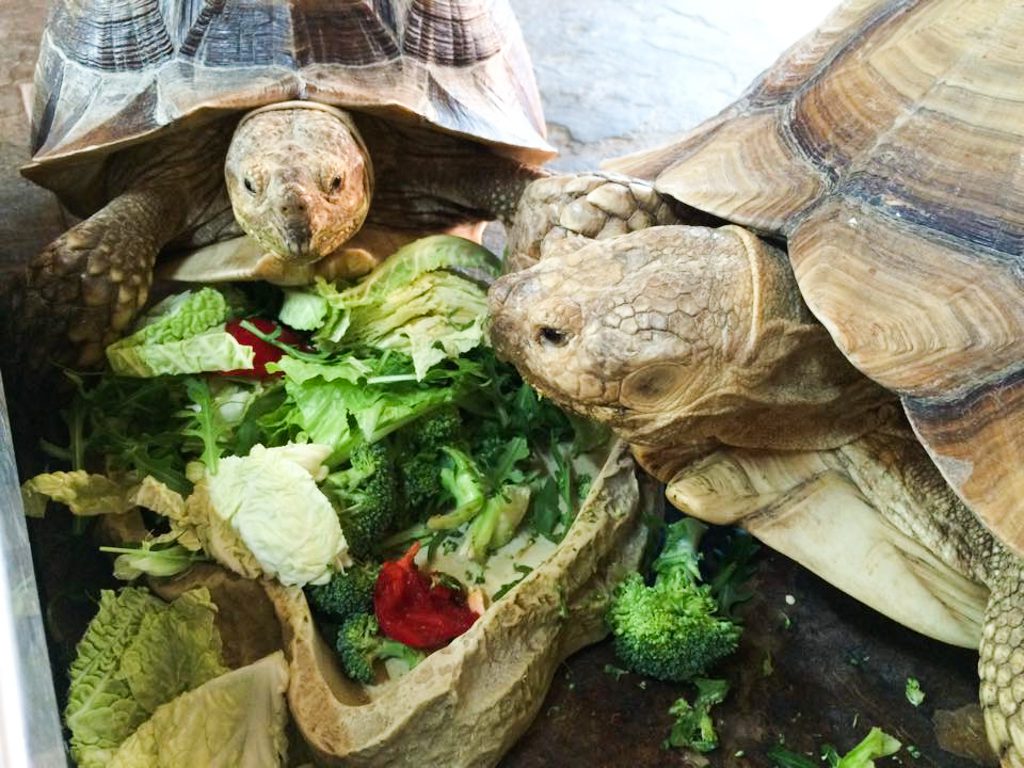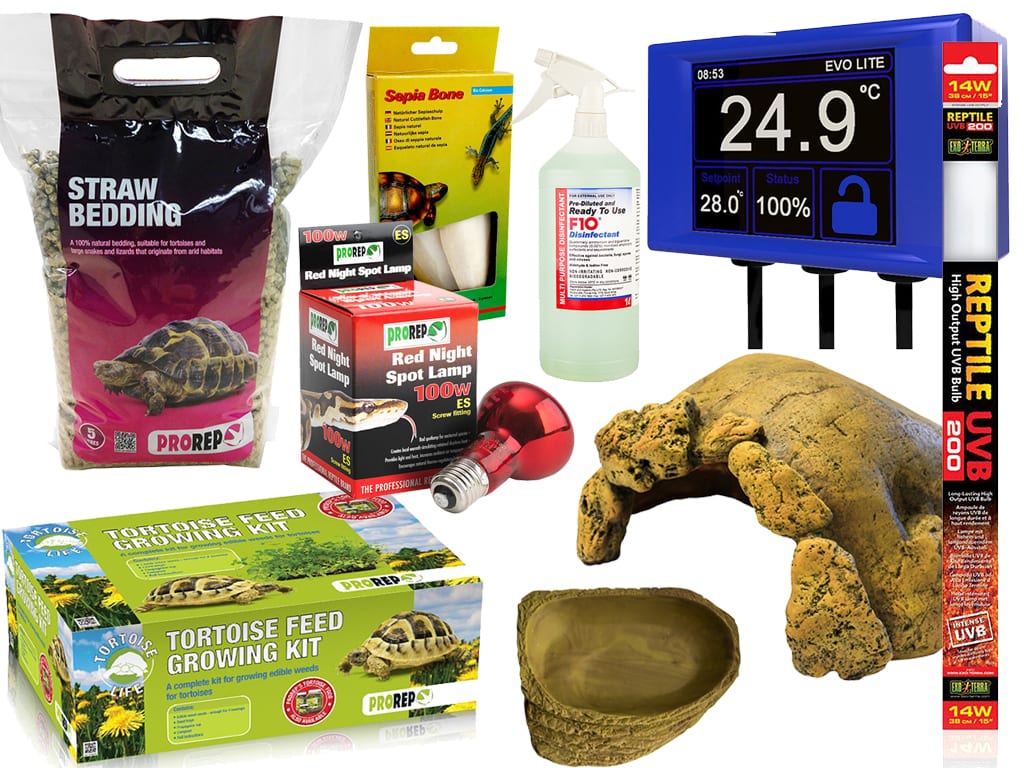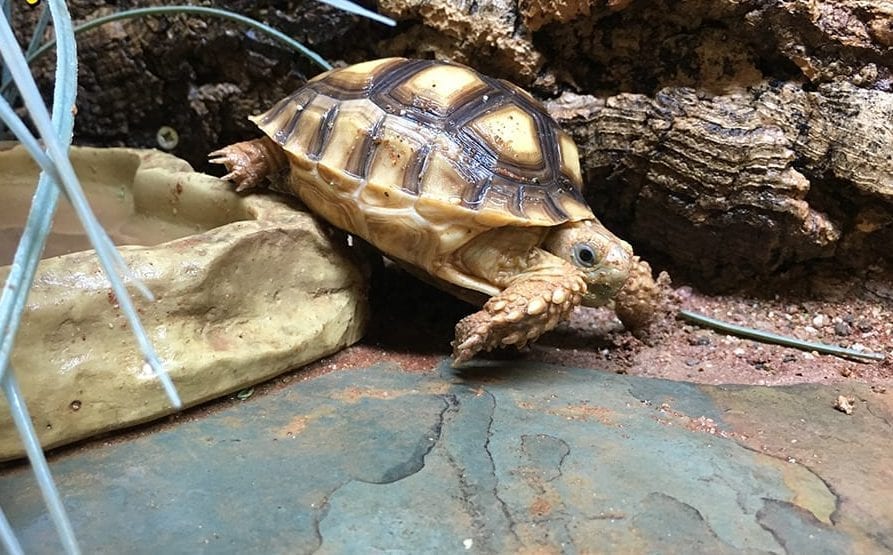
African Spurred Tortoise
Care Sheet
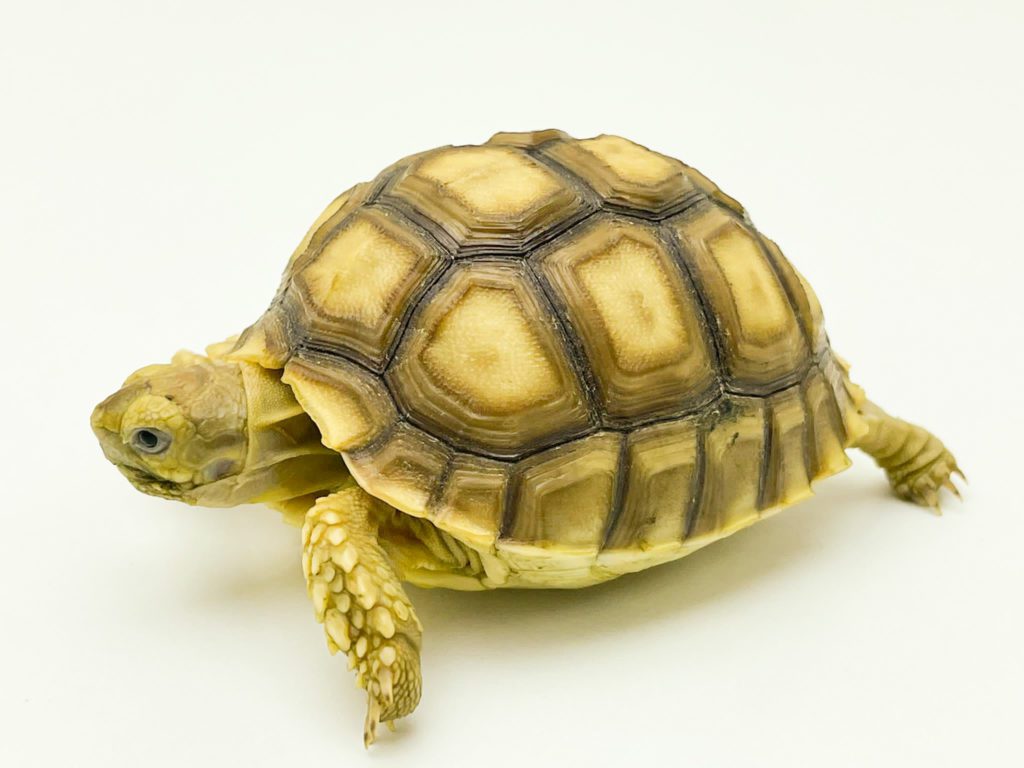
African Spurred Tortoise or ‘Sulcata’ are the third largest tortoise in the world
Adult Sulcata’s grow to a staggering 18inches, weighing up to 7.5 Stone
Sulcata Tortoises are known to be social animals who build up good relationships with their keepers. They have an interesting an inquisitive personality and will often choose to be around their keeper when exploring the outside world.
You may enjoy taking your tortoise out during the peak summer heat, we recommend minimising this time to 15-30 minutes so that your tortoise doesn’t get cold. Be ware of wild plants which may be poisonous to your pet.


HANDLING YOUR SULCATA
Sulcata tortoises are very strong, heavy and powerful and will pretty much go wherever they choose, by force if needed.
When small, they can be handled but should aways be done so that your tortoise is free to move. Tortoises enjoy head scratches and chin scratches. Male sulcata tortoises can be aggressive if the back of their shell is touched as they see this as a tortoise trying to mate or fight with them.
We advise keeping stroking and scratching to the front of the body. Be wary of legs as when larger tortoises pull them in they can be painful if your hand is behind the leg. Never put your hands or fingers near a sulcata tortoises beak as they have a very powerful bite.
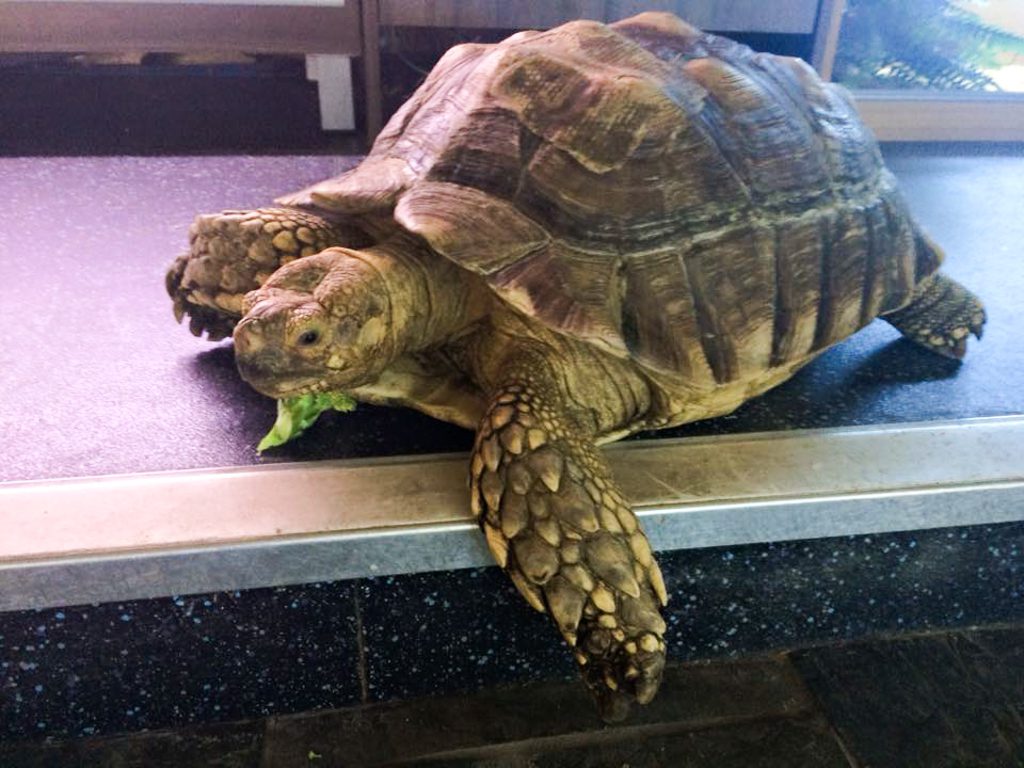

SEXING YOUR SULCATA
Sexing tortoises is different depending on species. Tortoises can be very hard to sex when small, but once a tortoise is large enough to start to develop more distinctive characteristics there are a couple of noticeable differences.
Male Sulcata tortoises have a curved shell underneath which allows them to mate. Females have a flat shell.
Male sulcate tortoises also have a wider and longer tail which allows for the storing of their sexual organs.
Males are generally bigger tortoises as adults than females.


HEALTH CHECK
Eyes– Eyes should be clear and open wide. Look out for any swollen eye lids or swelling around the eye as this can signify an eye infection which are common in tortoises. Turtle eyes is a great product to treat the eyes with and requires a couple of drops daily to clear the infection. You can also use saline and a cotton pad to gently swab the eyes daily. Separate tortoises which show signs of infection to avoid spreading.
Shell- The shell should be smooth with no chips or signs of pyramiding. Scutes which raise and point at the top are referred to as pyramiding in tortoises and are a sign of MBD (metabolic bone disease) which means that the tortoise has not received enough UVB and calcium + D3. it is important to change your UVB bulb every 6-8 months and dust food with calcium +D3 powder 2-3 times a week. The UVB and D3 work in hand to keep your tortoises shell and bones strong.
Stool– your tortoises stool should be firm and moist. Watery stools are caused by feeding your tortoise too many high water content fruits or vegetables. Encourage hay and dried grass diet with vegetables as a treat– feed leafy greens, Kale and cabbage.








ADVICE FOR LIFE!
When you buy your Pet & Housing from us!
Priority Boarding | Advice available face to face, via Telephone, Facebook Chat, Email, Instagram


